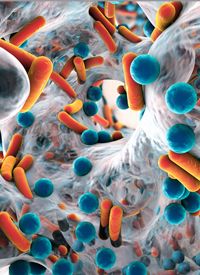Article
Pelvic, Abdominal Radiation in Pediatric Patients May Lead to Impaired Metabolic Health as Adults
Author(s):
The use of abdominal or pelvic radiotherapy in pediatric patients with cancer could lead to long-term negative impact on cardiovascular and metabolic health.

The use of abdominal or pelvic radiotherapy in pediatric patients with cancer could lead to long-term negative impact on cardiovascular and metabolic health, according to results of a study published in Cancer Epidemiology, Biomarkers & Prevention.1
“Body composition abnormalities and cardiometabolic impairments are of concern among survivors [of cancer], given that in the general population, these conditions increase the risk of developing life-threatening diseases, including cardiovascular disease and type 2 diabetes,” said corresponding study author Carmen Wilson, PhD, an assistant member in the Department of Epidemiology and Cancer Control at St. Jude Children’s Research Hospital.2
Results showed that lean mass was lower than values included in the National Health and Nutrition Examination Survey (NHANES) in both male (Z-score = –0.67 ± 1.29; P < .001) and female patients (Z-score = –0.72 ± 1.38; P < .001). Additionally, increased doses of abdominal (β = –0.22; SE, 0.07; P = .002) and pelvic (β = –0.27; SE, 0.08; P < .001) radiation led to decreases in lean mass in male and female survivors (abdominal: β = -0.30; SE, 0.09; P = .001; pelvic: β = –0.17; SE, 0.08; P = .026).
There were also increased rates of metabolic abnormalities among survivors of cancer in relation to NHANES. Insulin resistance (IR) was prevalent among 40.6% (95% CI, 35.5-45.0) of adult survivors of solid pelvic and abdominal tumors relative to the rates outlined in NHANES (33.8%; P = .006). Low levels of high-density lipoproteins (HDL; 28.9% vs. 33.5%; P = .046) and high triglycerides (18.4% vs 10.02%; P < 0.001) were elevated compared with normative data.
Although researchers have done a lot to improve 5-year survival rates in pediatric patients with cancer, risks of developing abnormalities in body composition, such as obesity, dyslipidemias, and IR. These abnormalities have been largely observed among adult survivors of pediatric lymphoblastic leukemia, brain tumors, and hematopoietic stem cell transplantation, and evidence is limited regarding to abdominal and pelvic tumors.
In the study, 727 survivors met the eligibility criteria, with 431 undergoing clinical evaluation. The median age of diagnosis was 3.6 years old (range, 0-24.8) with a median age of 29.9 years at the time of assessment (range, 18.7-55.1 years). The most common childhood diagnoses seen were Wilms tumors (42.9%), neuroblastomas (16.5%), and germ cell tumors (14.8%). Patients who received an amputation were not eligible for enrollment.
While a high frequency of patients on the study underwent radiotherapy compared with nonparticipants (50.1% vs 38.5%; P = .002), investigators didn't find notable differences in mean abdominal, pelvic, or pancreatic radiation dosing between participants and non-participants (P > .05).
IR was found to be most common among patients who had survived after being diagnosed with tumors of the bone (52.9%) or soft tissue (44.4%). Additionally, survivors with IR were observed as having a higher body mass index (P < .001) and waist-to-height ratio (P < .001) than those who did not have IR. Although there wasn’t an extensive multivariable analyses of diabetes mellitus due to low frequency (n = 26) in the cohort, it was observed that radiation to the pancreatic tail resulted in an increased risk of diabetes (risk ratio [RR] = 1.66; 95% CI, 1.29-2.14).
The multivariate analyses revealed that survivors of cancer who had high to normal muscle mass and high adiposity (HM-HA) were at an increased risk of low HDL (RR, 1.82; 95% CI, 1.32-2.51) compared with survivors with high to normal muscle mass and low to normal adiposity (HM-LA). Male patients were found to be at a higher risk oflow-density lipoprotein
(LDL; RR, 2.54; 95% CI, 1.64-3.93) and high triglyceride levels (RR, 2.10; 95% CI, 1.35-3.27) than females.
Hopeful next steps include examining whether interventions in pediatric patients and adult survivors can work to mitigate any abnormalities in body composition and cardiometabolic impairments. This might include positive lifestyle choices, such as a heart-healthy diet and regular exercise.
“While it may not be possible to avoid radiation therapy as a key treatment for many solid tumors, early research suggests that resistance training interventions in survivors increase lean mass,” concluded Wilson. “Further work is needed to see if training would also impact cardiometabolic impairments in this population.”
References
- Wilson CL, Liu W, Chemaitilly W, et al. Body composition, metabolic health, and functional impairment among adults treated for abdominal and pelvic tumors during childhood.Cancer Epidem Bio Prev. 2020;29(9):1750-1758. doi: 10.1158/1055-9965.EPI-19-1321
- Radiation therapy for the treatment of pediatric cancers may have long-term impacts on cardiovascular and metabolic health. News release. American Association for Cancer Research. August 13, 2020. Accessed August 13, 2020. https://bit.ly/2Vr1rKW









